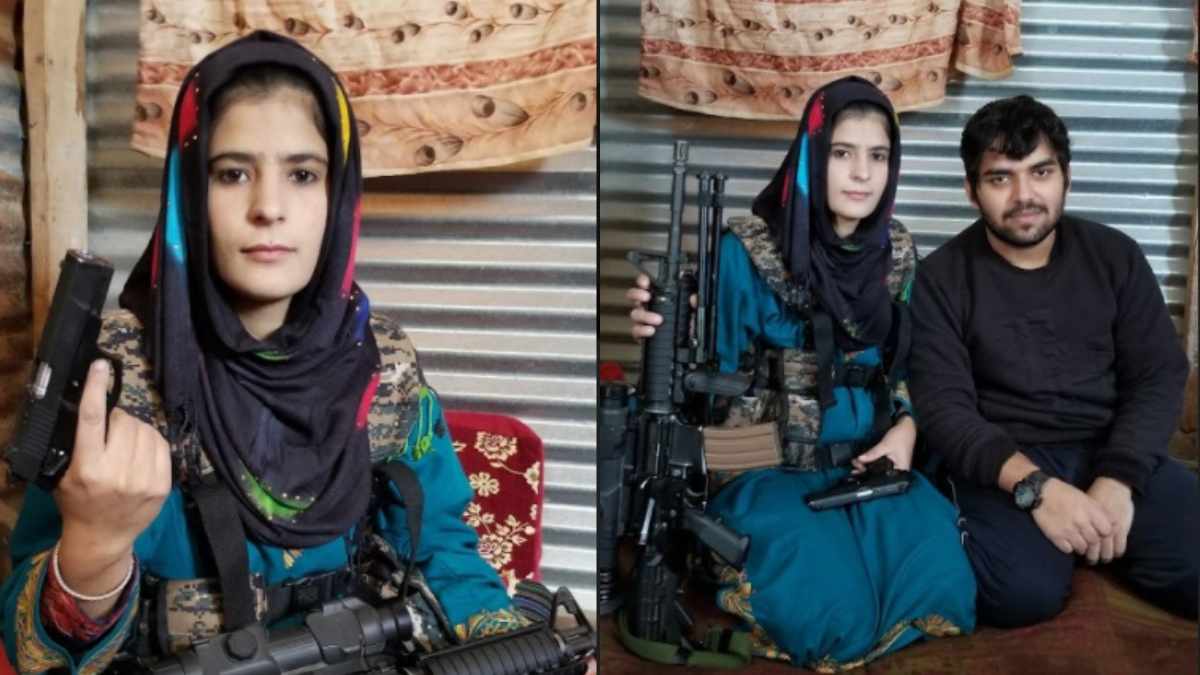The Pulwama attack chargesheet, recently filed by National Investigation Agency (NIA), is an exhaustive account of the fidayeen attack — from the time the conspiracy was hatched by Pakistan-backed Jaish-e-Mohammed (JeM) to its meticulous execution. It brings out how and why the attack happened, and also the challenges posed to make a fool-proof case against Pakistan.
Back in 2019 when NIA took over the case, there were several challenges the investigators had to face while finding answers to the mysteries — they had to fix the identity of the suicide bomber, identity the Maruti Eeco car, which was damaged beyond recognition in the explosion caused by Adil Dar, the JeM suicide attacker.
In February last year, more than 40 CRPF personnel en route to their deployment in the Valley were martyred in the high-grade explosive terror strike. At the time of taking over the probe, the agency only had an unverified video of Adil Dar, claiming him to be involved in the attack.
Sources say when the NIA team reached the crime scene in Pulwama, they found disjointed evidence in the form of blood, pieces of flesh, explosive remains at the spot of the crime. A need for post blast forensic investigation was felt to sift through debris to collect substantial evidence. The strike was, indeed, a big setback to morale of the security forces.
There was an urgent requirement to identify the explosives-laden Eeco van used in the attack and identify its owner. Adil, the fidayeen, had rammed the vehicle into the CRPF convoy and, therefore, with the impact of the explosion it blew apart into pieces.

Post blast forensic investigators had to be called in to the crime scene. Establishing the identity of the car was a top priority as it could have thrown up some leads so as to prevent more possible attacks. Forensic examination revealed that the van was blue in colour, and its crankshaft number was picked up from the remains.


The number was then sent to the transport department to ascertain the ownership. Inquiry revealed the van had been sold nine times and the last owner was a person called Sajjad Bhatt. This was a vital clue but not enough to unravel the big mystery.
The next priority was to establish the identity of the fidayeen — Adil, a resident of Pulwama. From the crime scene forensic investigators extracted a piece of flesh stuck on the remains of the Eeco vehicle. They had to put two and two together.
The NIA team already had in its possession a social media video message featuring Adil. In that video made before the attack, he claimed that he would carry out the attack. Prima facie, the video clip appeared to be fake as lip synch was out. Nevertheless, it was a vital clue, which gave a crucial lead.
The NIA team picked up some flesh tissues from the van at the crime scene to preserve DNA samples. Those samples were matched with his father’s DNA samples. And the samples matched. Adil’s identity was established but he was a dead man.
The probe team moved on with the facts on ground and picked up the remains of explosive material found at the blast site. It was sent for forensic examination, results showed the bomb was made of a potent mix of RDX, ammonium nitrate, nitro glycerine and other explosive substances.
NIA needed to answer the larger question- who was behind the terror attack? They needed more leads to tie the loose ends. But they had to wait for months until security forces carried out a series of encounters in the Valley.
In one of the encounters a terrorist named Mohammad Umar was killed. The security forces recovered Umar’s mobile phone. On examination some startling facts surfaced. Umar turned out to be the nephew of Masood Azhar and son of his brother Ibrahim Athar.
It may be recalled the latter was involved in the hijacking of IC-814 in 1999. The hijack of the Indian Airlines flight to Kandahar was carried out to secure the release of Masood Azhar. All this happened when Atal Bihari Vajpayee was the Prime Minister. The government had to release Masood Azhar as a ransom for the release of the hostages. Lives of 170 Indians were secured in the bargain.
After his release, JeM Chief Masood Azhar carried out terrorist activities from Pakistan’s soil. He was involved in the Red Fort attack, Parliament House attack and then 9/11 happened in the US. Afghanistan became the focus so Masood Azhar had to divert his attention to Pakistan. He started aiding Taliban and Al Qaeda. His brother Athar Ibrahim played a pivotal role.
Subsequently, the focus of JeM was back to Kashmir and terror attacks started in the Valley. The J&K Assembly was attacked. But after the hanging of Afzal Guru in 2013 there was a spate of JeM activities.
There were a series of attacks in Hiranagar, Dinanagar, Pathankot, Nagrota and Lethupura CRPF camps. In October 2018, Umar’s real brother Ibrahim Haider was killed in an encounter by the security forces.
It was after this event that Masood Azhar gave a call to Umar and other terrorists active in the Valley to carry out big jihadi attacks. Mohd Umar, who was trained in bomb making in Afghanistan at the terror camps of Taliban and Al Qaeda, was sent to India with the task of spreading terror.
In 2018, he managed to infiltrate India with a huge quantity of RDX and other explosives through the Samba sector along with other terrorists in batches of four to five. They then stayed in South Kashmir and mobilised over-ground workers.
Umar, with the help of local support, managed to order online aluminium powder, paint, batteries and gloves required for making the bomb. Gelatin sticks were sourced from querying mines in Kadarman and Khraw.
Shakir Bashir was instrumental in keeping all the material together. Meanwhile, Adil Dar, the suicide bomber, was indoctrinated by JeM. He was inspired by discourses of JeM Chief Masood Azhar. Sajjad Ahmed Bhatt was tasked to buy the Eeco van and then hand it over to Shakir, who brought the van to his house. Thus, he was having both the explosives and the vehicle. His house was close to the road where security forces’ movement was visible.
Mohammad Umar managed to make the bomb over a period of two days — 5-6 February 2019. But between 6 and 13 February roads were closed due to the snowfall and security forces movement was stalled. On 14 February, Shakir again saw the movement of CRPF convoys.
On seeing the movement, he readied the Eeco van, which was laden with explosives, and handed over the vehicle to Adil for carrying out the fidayeen attack. He alighted from the vehicle and then Adil carried out the fidayeen attack.
A core group of Mohammad Umar, Adil, Shakir and Samir was deeply involved in the attack. Shakir Bashir Magrey also provided support to the group. Then a person called Waizul Islam was identified for helping the core group in the online shopping of the material used in the attack.
In the entire sequence of events a woman called Insha also played a major role in supporting Umar. She got involved in a relationship with him and, therefore, she and her father Tariq Pir also got involved. Father-daughter duo facilitated Umar’s movement in and around Pulwama.
According to the NIA investigations, they provided shelter to Samir Dar and Adil Ahmed Dar. As per the probe, all of them stayed at Insha’s house on at least five occasions. The social media video which Adil Dar made before carrying out the attack was also made in her house.
NIA during the probe picked up several other persons. Seven persons were arrested, seven of the accused are absconding and six of them died in encounters with security forces. The data retrieved from phones of the slain terrorists revealed the deep-rooted conspiracy hatched by JeM Chief Masood Azhar. Several voice messages salvaged from the mobile phones of terrorists revealed that videos of bodies of CRPF jawans martyred in Pulwama attack were used to motivate more terrorists to carry out jihad.
Inquiries also revealed that Pakistan’s banking system was also complicit in supporting the terrorists. Days before the attack JeM had put Rs 10.43 lakhs in Mohammad Umar’s bank account in Pakistan. The money was transferred in two separate accounts in Meezan and Allied Banks of Pakistan. A total amount of Rs 5,70,000 was sent to Kashmir through hawala channels. All this money was used to make the bomb.
The terror module had plans of carrying out another attack after Pulwama. But India has retaliated and punished Pakistan by carrying out Balakot air strikes. After this, JeM handlers in Pakistan asked the module to lie low and not carry out another attack for fear of international pressure.
NIA carried out the probe of this case in a very silent and professional manner. In the form of a chargesheet running into more than 13,500 pages, they have prepared a document of immense international value.
If used properly it could fix the charges against Pakistan, which is already on the grey list of FATF. The evidence deduced could also be used to expose Pakistan’s eye-wash at the UN and other international forums.
Digital evidence especially WhatsApp chats, interceptions and other related evidence are there for everybody to see. Eventually, the evidence will be tested in courts and the culpability would be fixed in due course of time.
Meanwhile, amid the painstaking and in-depth probe being carried out by the NIA, there are certain lessons which need to be learnt. For instance, the measures need to be taken to stop infiltration of terrorists from the Samba sector. Active hawala channels need to be plugged quickly to prevent further attacks.
There is also a need to carry out regular checks of vehicles moving from Jammu to Kashmir. These roads are also being used by the terrorists for movement. Most importantly, there is a consistent need to sensitively and sensibly dissuade Kashmiri locals from supporting elements inimical to the national security. The trial of this case would be keenly watched.























